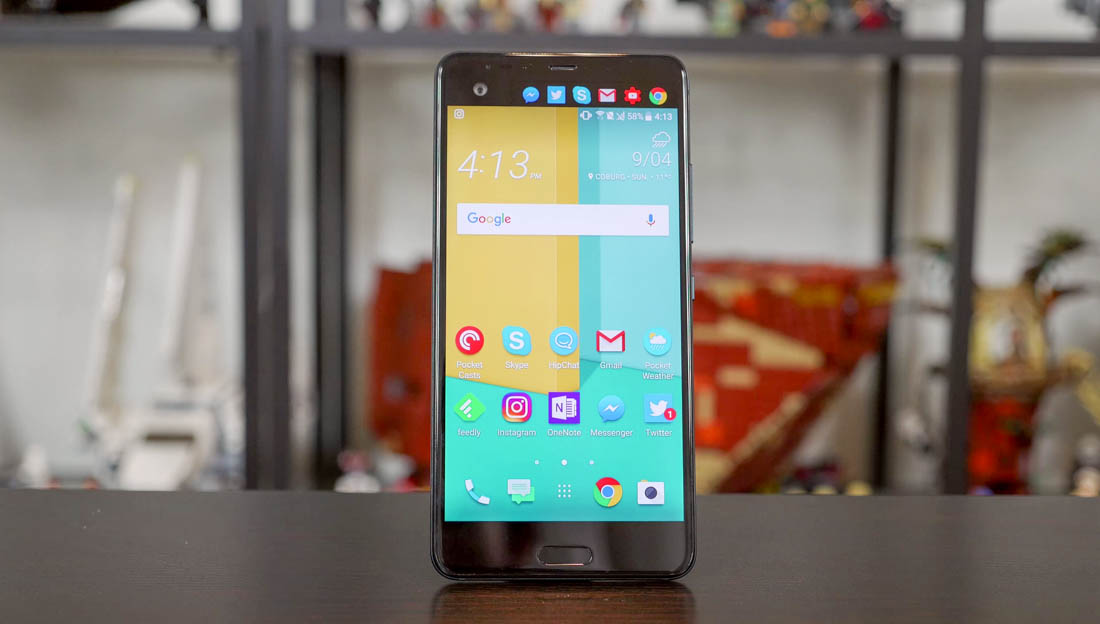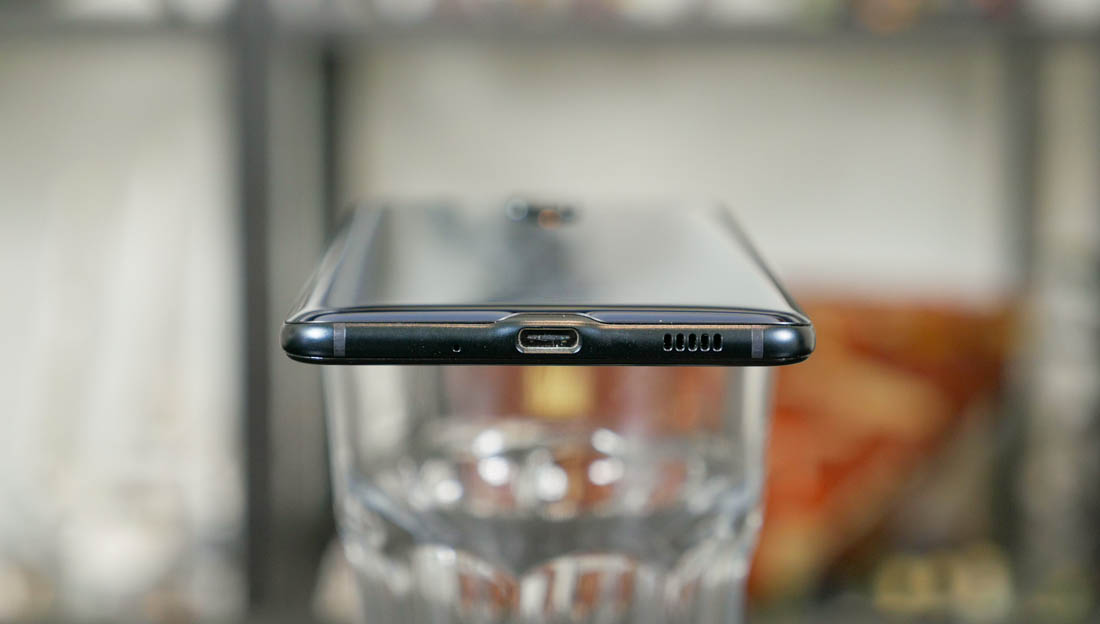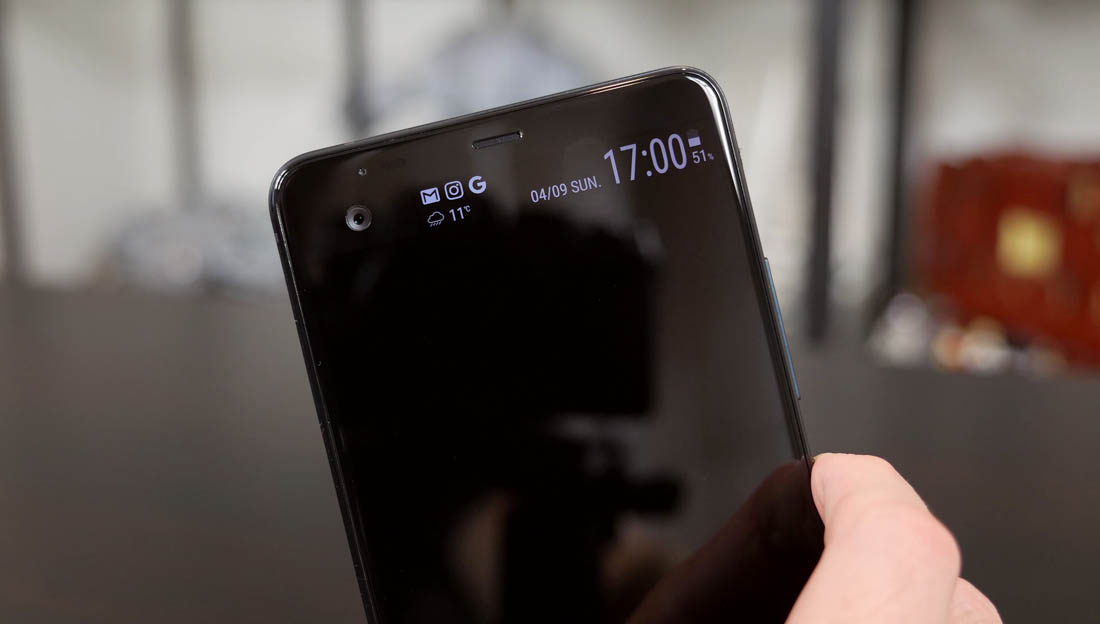It seems like decades since HTC released the fantastic One M7, a flagship smartphone that elevated the company's design and engineering team to elite status. Since then HTC has stagnated and even reasonable devices like last year's HTC 10 simply didn't sell anywhere close to enough units to satisfy the company.
And this brings me to the device on hand today: the HTC U Ultra. Unfortunately, this is not a smartphone that will return HTC to its glory days. If anything, odd design decisions show us that HTC currently lacks innovative thinking in their engineering department.
The HTC U Ultra is a massive handset. It has a 5.7-inch display as well as a secondary display, similar to the LG V20, and capacitive navigation buttons. When combined with large bezels and a huge chin, the U Ultra can be an unwieldy device. It's definitely too large for its display, and in an era where LG and Samsung are moving to displays that attempt to cover the entire front of the phone, the U Ultra seems dated right out of the box.
The U Ultra has been constructed using premium materials: glass on front and back, as well as metal around the sides. This is a combination we've seen before on Samsung's devices, and HTC has pulled it off reasonably well here, though perhaps not as well as Samsung.
The issue with using a glass back on any phone is that it can be quite slippery, and considering how it can be tricky to hold and operate this massive phone on a good day, the glass back doesn't do you any favors. This isn't a phone for clumsy people.
The shiny glass back is also a massive fingerprint magnet. The back is one of the most reflective glass panels I've seen, and it attracts all sorts of grease and oil like nothing else. I like keeping my phones clean, but this is an impossible task with the HTC U Ultra; just picking up this handset will leave fingerprints on the back, detracting from what's otherwise a nice design.
HTC has opted for slimness with the U Ultra. The phone clocks in at 8mm thick and 170 grams heavy, which is reasonable for a phone of this size. For some bizarre reason, though, HTC has only managed to cram a 3,000 mAh battery inside, which is well below average. This has a massive impact on battery life, as I'll discuss later. The U Ultra also has a camera bump, so perhaps HTC should have filled out the phone to the thickness of the camera with a larger battery.
While the capacitive buttons on the U Ultra can be hard to hit - the back button is a stretch when using the phone in your right hand - I'm pleased to see a fingerprint sensor included here. Having this sensor on the back would be a more comfortable location, but the sensor is nonetheless responsive and works well as a home button.
The headphone jack is one of the biggest omissions here. This dumb design choice began with Apple and it's just awful. In 2017, most people are still using wired headphones, and many have their favorite pair. Even though HTC's included headphones are reasonable, I wouldn't and don't want to use them over my trusty Sennheiser earbuds. Except I can't use my favorite earbuds because HTC decided to omit the headphone jack.
I even tried to use a third-party USB-C to 3.5mm audio dongle on the U Ultra, only to be told this accessory was "incompatible" and I should use the included HTC headphones instead. So the U Ultra knows I've plugged in a 3.5mm audio jack dongle, but it doesn't let me use it. What a ridiculous, user-hostile decision.
There are some better aspects to the U Ultra's design, though. You get stereo speakers and 'BoomSound', with the U Ultra combining the in-call speaker with a bottom firing speaker to improve the audio experience. It's not quite as good as dual front-facing stereo speakers, but it comes close. There's also a microSD card slot included alongside 64GB of storage, so you're well covered storage-wise.
One of the main attractions on the U Ultra, and something HTC hasn't done before, is the secondary display. It's a 2.05-inch 1040 x 160 panel placed above the top right corner of the handset, providing additional controls and information. While this is a neat idea, in practice it doesn't add much to the experience, and many of the features provided by the secondary display are simple gimmicks.
The primary uses for the additional display are notifications and shortcuts. Whenever you receive a notification, it pops up in the secondary display so you can see a small snippet of information from within any app. This sounds good, but Android handsets have been using pop-down cards when notifications are received for a little while now, and in practice this achieves the same result without the use of an extra screen. It's a similar thing for shortcuts to music controls, contacts, apps, and so forth: it's handy to have this ability in a small extra screen, but you can achieve largely the same experience by quickly jumping to your home screen.
The additional display also works when the main display is off. You can pick up the handset or tap on the screen while it's "off" to view the time and basic notification icons. Again, neat, but always-on displays have been implemented without secondary displays on both AMOLED- and LCD-laden handsets previously.
As for the main display, we're looking at a 5.7-inch 2560 x 1440 Super LCD5, with a pixel density of 513 PPI. This screen provides a sharp viewing experience, and like previous Super LCD panels, its viewing angles are excellent for an LCD. Its peak brightness is acceptable, at approximately 450 nits, though it falls behind several other modern LCDs, some of which can push up to 700 or 800 nits in direct sunlight.
Due to issues with an app I use for testing on the HTC U Ultra, I couldn't run my usual array of display color tests. However I can report that contrast is good, at 1547:1, and the color temperature of this display isn't fantastic, falling well into the 'cold' range thanks to accentuated blues. You can correct the color temperature somewhat through the U Ultra's display settings.
As a general observation, the U Ultra's display looks decent, as do many of today's flagship smartphone displays. It's disappointing that the U Ultra doesn't support Daydream, because a 5.7-inch 1440p display would well suited to VR applications.







